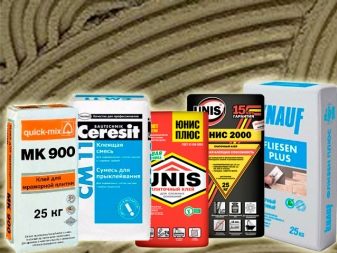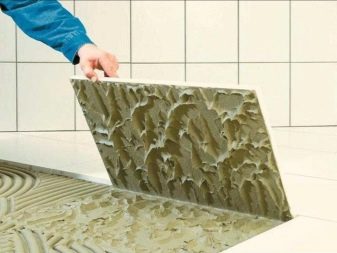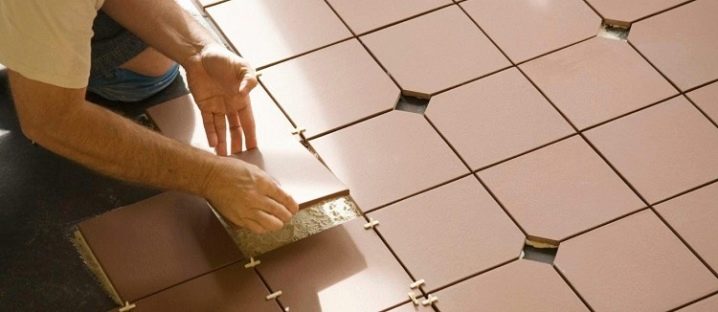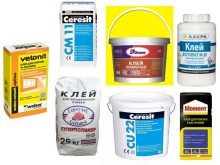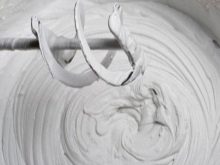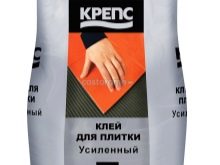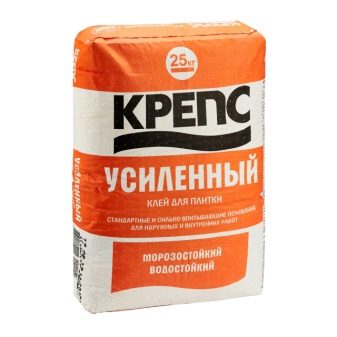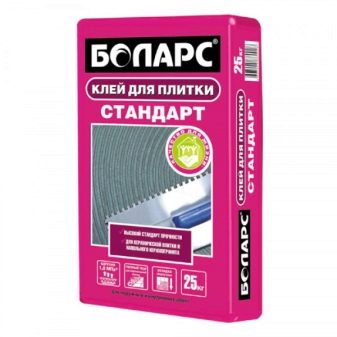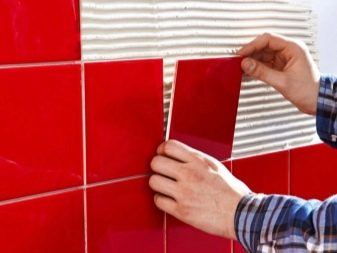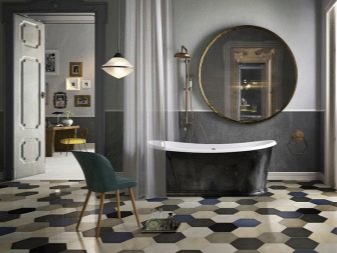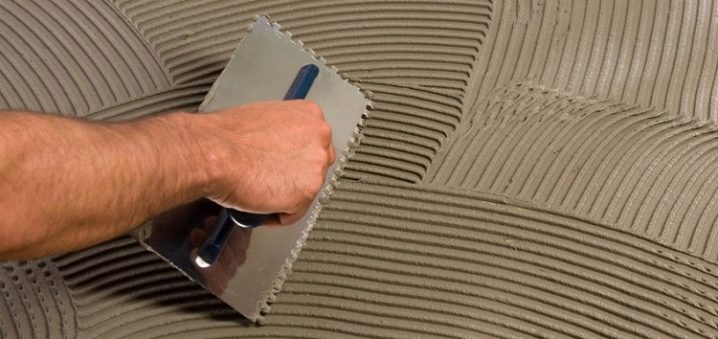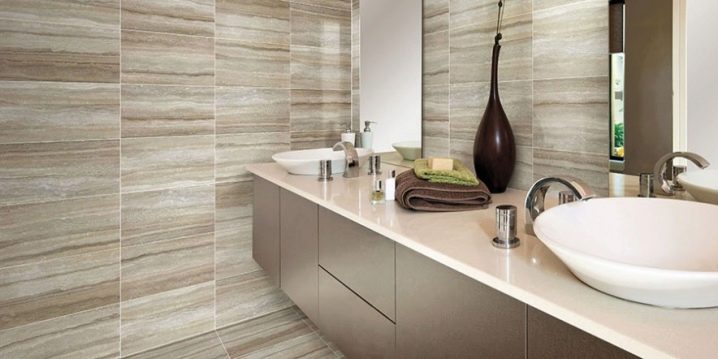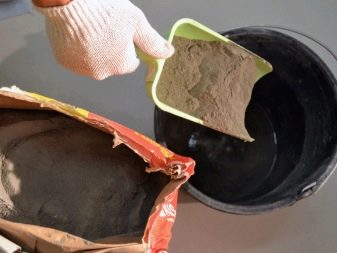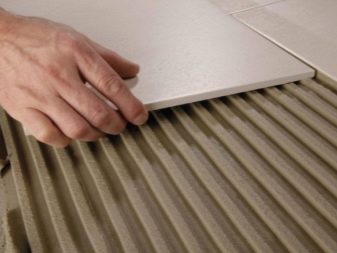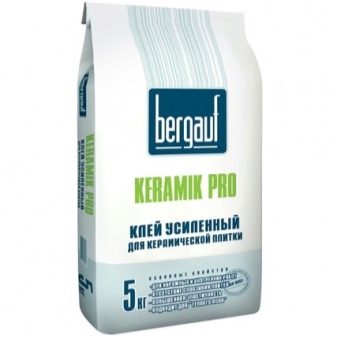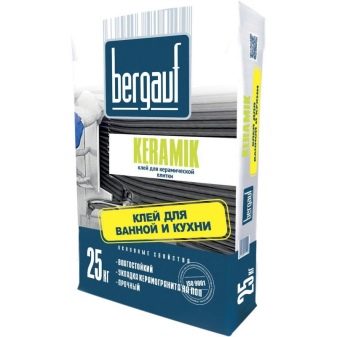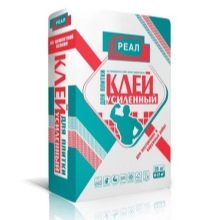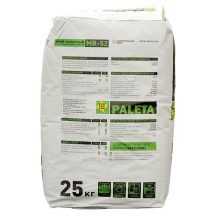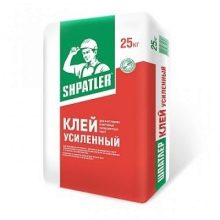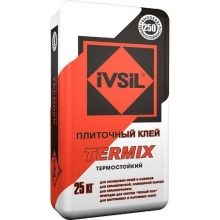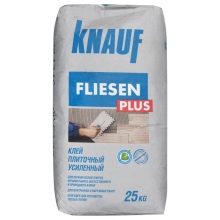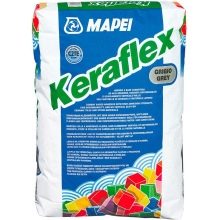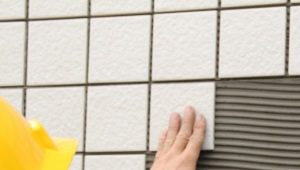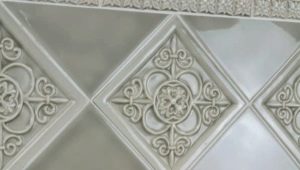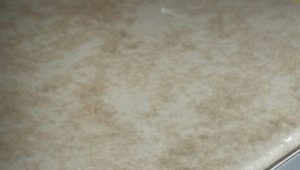Reinforced tile adhesive: selection criteria
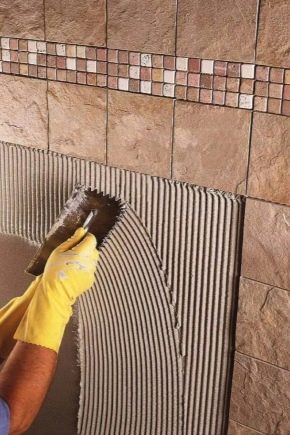
Construction and repair works rarely do without tiling. This building material is necessary for rooms with increased exposure to steam, moisture, high temperature. For such cases, a reliable reinforced tile adhesive is needed, the selection criteria of which are particularly important, since the product range is large enough.
Special features
Unlike standard adhesive products, Reinforced appearance of tile adhesives for high adhesionwith base surface and coating. At the same time, its structure is much more resilient than universal varieties suitable for most types of tiles.
If universal formulations are used with normal moisture parameters, the enhanced version is designed for a more aggressive environment, a large amplitude of temperatures, high humidity. Moreover, it can be used with increased physical effects.
Excellent technical characteristics of the mixture for increased fixation are directly dependent on the special components that make up it:
- carefully sorted, fractional quartz sand;
- cement is used for strong adhesion;
- so that the mixture is plastic, evenly distributed over the base, polymer plasticizers are added to it;
- mineral or polymer modifiers - an additional element to improve the strength and durability of the adhesive.
Glue the base before use diluted with water to obtain a homogeneous, thick mass.
In addition to cement glue of reinforced formation, which is popular not only because of its decent qualities, but also because of its low cost, There is also an epoxy adhesive for tiles, which has super strength, frost resistance, and high anti-corrosion properties. It is ideal for lining rooms with maximum loads..
This mixture is characterized by a long service life, resistance to cracking. Suitable for both indoor and outdoor use.It consists of epoxy resins, polyurethane, organic fibers and fillers. In everyday life, this option is not in demand because of the high price.
Merits
Reinforced glue in its types and depending on the brand may differ slightly chemical composition, designed for specific conditions of use. Why it is necessary to choose such a mixture, you can understand, having considered its positive qualities in comparison with the usual types of materials:
- the product is durable and high strength;
- retains heat well and is not afraid of high humidity;
- it is frost-resistant and perfectly tolerates temperature drops;
- maintains stacking of large-format, heavy plates;
- economically consumed per square meter (not more than 5 kg).
Such material has high-quality adhesion with any bases: concrete, cement, brick, minerals, gypsum plasterboards. It can be applied on tongue-and-groove and alabaster blocks that serve as interroom partitions, with further finishing with tiled coating.
Due to the dense consistency of the solution, sliding of the coating is excluded. Mix is suitable both for inhabited, and public places,It can also be used in industrial facilities, where people, equipment, cargoes constantly move, and as a result, there is a high dynamic and static pressure on the coating.
Criterias of choice
The material should be chosen on the basis of climatic, temperature conditions of the room, and the quality and weight of the tile surface should be taken into account. A reinforced version is required for large format products, for example, 300x300 mm, although this composition is also suitable for large parameters.
Other factors affecting the choice:
- if the tile is made in bright, transparent colors, then the main mixture should also be made on the basis of light cement;
- the time of glue drying is important - reinforced types of modern brands are designed to dry for about a day, but there are also quick-drying compounds hardening within a few hours;
- You should always pay attention to the characteristics of resistance to slipping - it depends on whether there will be a slide or not;
- it is important and the time of hardening of the solution during the work, because sometimes you need to adjust the position of the coating fragments.
During the purchase of products, the user needs to know the consumption of tile composition, but do not rely on bare numbers. After all this, largely depends on the thoroughness of the preparation of the foundation: the better it is done, the less glue will be needed for work.
Buying a reinforced composition, you should definitely ask about its shelf life, and at the same time, and get acquainted with the certificate of quality.
Manufacturers
Different types of glue base are suitable for facing with ceramic tiles and porcelain stoneware, but you always want to choose the best and most reliable option.
Popular and proven materials include the following products:
- Bergauf keramik - glue of high fixation on the basis of cement, intended for standard and large floor tiles, ceramic granite products, stone. A scope - internal rooms, balconies, loggias, verandahs, socles of buildings. Suitable for concrete and cement surfaces.
Consumption - 2.5 kg per 1 square. m., drying time - two days. Drawing provides a layer from 2 to 6 mm. Highly elastic composition is frost resistant, not afraid of heat, corrosion, cracking. The standard package weight is 25 kg.
- Paleta - cement glue, which is perfect for creating warm floors, wall tiling. Can be used outside and inside buildings.Possesses the increased adhesion with any bases.
- "Real" - domestic reinforced high quality glue with high moisture resistance and elasticity. The mixture is applicable to laying tile in damp areas, including bathrooms, saunas, swimming pools. The composition is suitable for lining floors, consumption does not exceed 4 kg per 1 square. m
- Shpatler - plastic solution with good resistance to slipping on vertical surfaces, waterproof and frost resistant. It has a high adhesion to the main building surfaces: concrete, reinforced concrete, cement-limestone plaster.
It is worth noting the positive reviews of builders about such brands as Volma Ceramics, Ceresit CM 11 Plus, Ivsil Termix. Knauf Fliesen is recognized to be the most convenient to use, and Mapei Keraflex is the most safe.
With significant negative effects of the external environment in the premises, it makes sense to use an enhanced composition of the adhesive base - this will preserve the quality of the lining and its attractive appearance for a long time.
In the next video you will find a training video on the lining of the bathroom.
